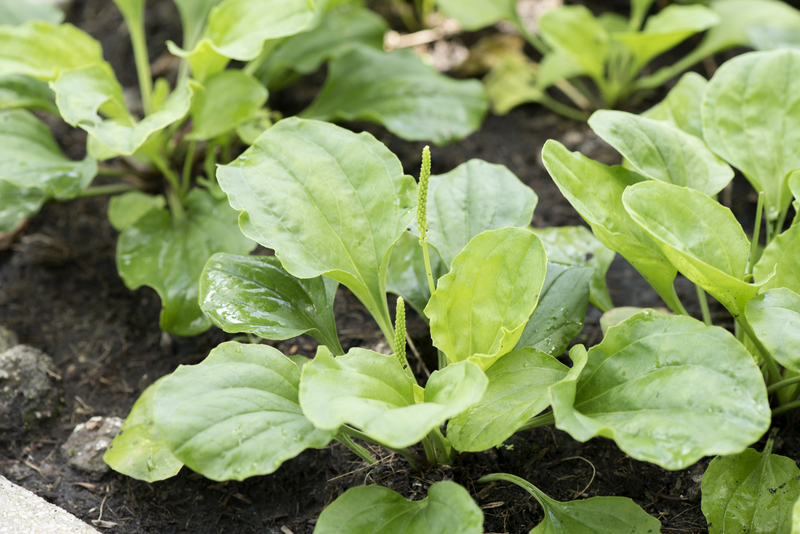Creating a Wind-Resilient Garden Paradise
Posted on 05/06/2025
Creating a Wind-Resilient Garden Paradise: A Comprehensive Guide
Imagine stepping into your backyard oasis, lush with vibrant blooms, leafy foliage, and the calming sound of rustling leaves - not hurricane-force winds ripping through your carefully planted beds. For many gardeners, strong wind can turn garden dreams into frustration. However, designing a wind-resilient garden paradise is not only possible but can be an exciting creative journey. In this detailed guide, learn how to embrace and work with the wind to cultivate beauty, sanctuary, and sustainability in your outdoor space.

Understanding the Challenges of Wind in the Garden
Wind is one of nature's most challenging elements for gardeners. High gusts can break branches, uproot plants, dry out soil, and spread seeds and debris. Before you design your wind-resistant garden paradise, it's essential to understand how wind interacts with your landscape.
- Physical damage: Strong winds can snap stems, desiccate leaves, and topple plants.
- Soil erosion: Persistent wind removes topsoil, essential nutrients, and can expose root systems.
- Microclimate changes: Wind affects temperature, moisture levels, pollinator activity, and even pest migration.
An effective wind-resilient garden is one that anticipates and buffers against these effects, creating a protective, nurturing environment for both plants and people.
Site Assessment: Knowing Your Garden's Wind Patterns
Every piece of land is unique. Creating a garden protected from wind starts with observation:
- Identify prevailing wind direction - Most regions have dominant wind directions depending on geography and season.
- Note wind speed and gust patterns - Is the wind gentle most of the year, or are storms frequent?
- Understand site exposure - Urban gardens may have turbulence from buildings, while open rural areas face stronger, uninterrupted winds.
- Locate microclimates - Buildings, fences, and slopes already provide some wind breaks. Find sheltered and more exposed zones.
Spend a week or two monitoring your garden throughout the day to get a realistic picture of its wind vulnerability.
Design Principles for a Wind-Tolerant Garden
The goal is to integrate wind resilience into every aspect of your garden design. Key principles include:
1. Create Layers of Shelter
Rather than a single windbreak, a wind-resilient yard thrives with multiple layers of defense:
- Outer defenses: Hedges, rows of trees, and tall shrubs catch and slow wind at its most forceful.
- Intermediate zones: Medium-height hedges and perennial beds provide filtered protection.
- Inner sanctuaries: Garden walls, trellises, or dense plantings create tranquil, wind-free pockets.
Staggering plantings and hardscape in overlapping layers mimics natural wind defense found in forests and wild landscapes.
2. Use Permeable Barriers
Solid walls and fences may seem like obvious shield solutions, but wind can create dangerous turbulence when completely blocked. Permeable barriers like slatted fences, mesh, and open hedges allow some airflow, reducing speed without causing damaging eddies.
3. Anchor Your Soil
Wind erosion is a threat to both plant health and soil fertility. Anchor the earth with:
- Groundcovers - Creeping thyme, sedums, or clover bind the soil, preventing it from blowing away.
- Mulch - Organic mulch protects against moisture evaporation and shields bare dirt from the wind.
- Terracing and raised beds - On sloped or highly exposed sites, these structures physically stabilize the soil.
Choosing Wind-Tolerant Plants
Not all plants are equally equipped to thrive in exposed, blustery conditions. A key to establishing a windproof garden paradise is selecting species that are naturally wind hardy and adaptable:
Tough Trees for Windy Sites
Choose flexible, deep-rooted trees. Some favorites include:
- Pines (Pinus spp.): Their open branching and resinous needles make them classics for exposed landscapes.
- Oaks (Quercus spp.): Dense wood and spreading roots stand up to storms.
- Hawthorn (Crataegus spp.): With its dense growth habit, hawthorn serves well in windbreaks.
- Willows (Salix spp.): Particularly at the edges of properties, willows flex instead of falling.
Sturdy Shrubs and Hedges
- Boxwood (Buxus spp.): Densely branched, boxwoods form classic, wind-dampening hedges.
- Elaeagnus (Elaeagnus spp.): Silvery foliage and tolerance make this a go-to wind hedge.
- Escallonia: Flowering, evergreen, and tough, perfect for coastal and inland wind-battered gardens.
Perennials and Grasses That Stand Tall
- Pampas Grass (Cortaderia selloana): Architectural, flexible, and beautiful in the breeze.
- Daylilies (Hemerocallis spp.): Strap-like foliage resists tearing.
- Lavender (Lavandula spp.): Low growth and aromatic foliage make it both practical and attractive.
- Red Hot Poker (Kniphofia): Upright and wind-resistant perennials with dramatic inflorescences.
Native plants adapted to your region's wind and weather are always the best candidates for a truly wind-resilient garden.
Designing Your Wind-Resistant Paradise: Step by Step
1. Plan Your Windbreaks
Strategic windbreaks are the skeleton of any wind-savvy garden layout. Here's how to make them work:
- Plant in the path of prevailing winds. Typically, this is the western or southern edge in temperate climates.
- Stagger rows of tall plants and shrubs to filter, not block, the wind.
- Space barriers apart based on expected plant maturity. A row of trees, a hedge, and a slatted fence can each absorb and slow wind at different levels.
A windbreak can reduce wind speed for a distance of up to 10 times its height!
2. Shelter Key Spaces
Protect the places where people - and your most delicate plants - linger:
- Pergolas or arbors clothed in tough vines (like wisteria or honeysuckle) create courtyards sheltered from prevailing breezes.
- Walls and screens near patios offer instant wind moderation, making outdoor relaxation feasible even on blustery days.
- Sunken seating areas use the land's contours to escape wind.
Think like a landscape architect: focus wind protection on the spaces you want to use most.
3. Reinforce Beds & Borders
In highly exposed gardens, edge beds with rocks, woven willow hurdles, or even robust perennials to keep soil and mulch from blowing away. Choose groundcovers or low hedges as "wind-shadow" planting to protect delicate flowers or edibles.
4. Integrate Hardscape Thoughtfully
Paths, patios, and outbuildings all influence airflow. Place them to steer or slow wind, not funnel it. Paving stones set in gravel rather than concrete allow rainwater infiltration and discourage erosion from wind-driven rain.
Maintenance for a Wind-Defended Oasis
Creating a wind-defended garden sanctuary is more than just planting. Regular care and smart adjustments keep your paradise lush and inviting:
- Mulching annually keeps soil moist and anchored, especially after windstorms.
- Pruning trees properly (thinning rather than topping) reduces wind resistance and danger of broken limbs.
- Regular inspections after storms ensure windbreaks remain dense and free from damage.
- Tying or staking vulnerable young trees for their first 1-2 years (but not so tight as to chafe) helps roots anchor deeply.
- Replenishing organic matter builds robust soil that resists both wind and drought.
Innovative Solutions for Extreme Wind
In hurricane-prone or very windy regions, consider additional defenses for your wind sanctuary garden:
- Living Walls: Vertical gardens made from sturdy, wind-resistant plants create instant protection and beauty.
- Windbreak Fences: Specially designed wind fences or mesh panels can reduce wind speed by up to 75% for several meters downwind.
- Earth Berms: Low mounds of soil, planted with tough grasses, add subtle wind protection in large gardens.
In coastal zones, use salt-tolerant plants for outer barriers, and design with undulating lines rather than straight rows to mimic natural wind-dispersing formations.
Best Practices: Sustainable and Wildlife-Friendly Wind Gardens
Wind-resilient gardens can also nurture pollinators, birds, and beneficial insects:
- Plant wildflower meadows in sheltered spots to shelter pollinators on windy days.
- Include berrying shrubs for birds, with dense branches for nesting and protection.
- Provide bird baths and insect hotels in hidden nooks for creatures needing respite from wind.
Sustainable gardens are those that work with - not against - nature. Embrace wind-tolerant native plants, recycle organic materials, and avoid pesticides to build a self-sustaining ecosystem.

Common Mistakes to Avoid in Wind-Resistant Garden Design
- Using solid fences as windbreaks - They increase turbulence and often fail. Choose permeable solutions.
- Planting wind-sensitive species in exposed areas - Reserve these for the most sheltered corners.
- Neglecting maintenance - Disrepair in windbreaks can undo years of work in just one storm.
- Ignoring soil health - Weak, dry soil is easily eroded and less able to support strong root systems.
Conclusion: Enjoying Your Wind-Defended Garden Paradise
Wind-resilient gardening is not about eliminating wind entirely - a gentle breeze brings movement, music, and pollinating insects into your garden. But by embracing design, plant selection, and ongoing care, you can transform wind from an adversary into an ally.
With layered windbreaks, hardy plants, permeable barriers, and sustainable maintenance, your once-blustery backyard can become a true wind-resilient garden paradise. Enjoy tranquility, beauty, and productivity in your outdoor haven - whatever the weather brings!

